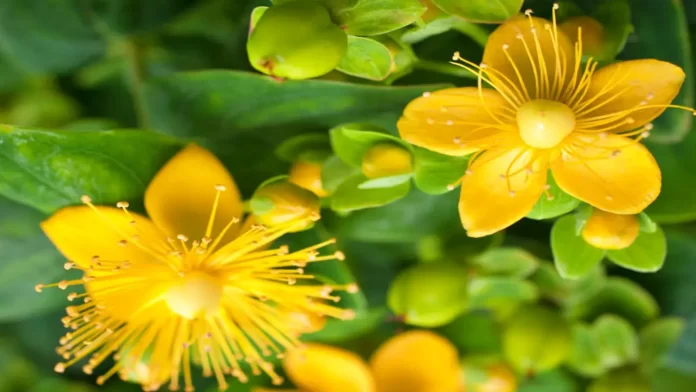What do beer and medieval medicine have in common? The answer lies in a humble word: wort. While most people associate wort with the liquid base of beer before fermentation, this versatile term has deeper roots—literally and figuratively. Wort also refers to herbs, particularly those used for healing purposes. One such herb, St. John’s Wort, has captivated cultures for centuries with its rich symbolism and medicinal uses. Let’s explore the fascinating history, meanings, and applications of wort, from breweries to botanicals.
What Is Wort? A Tale of Two Meanings
At its core, wort is the unfermented liquid that eventually becomes beer. Brewers create it by mashing grains like barley or wheat, extracting sugars, and preparing the mixture for yeast to work its magic. Historically, towns like Blackburn thrived on brewing traditions, where the smell of fermenting wort filled the air. With three breweries once operating in its town center, Blackburn boasted more pubs per capita than anywhere else in Britain—a testament to the cultural significance of wort.
But wort isn’t just about beer. In Old English and Anglo-Saxon times, wort meant “herb” or “plant,” derived from Germanic roots. This connection between plants and their healing properties gave rise to the term “wort-cunning,” which simply meant “knowledge of herbs.” Over time, however, the use of wort declined, surviving only in plant names like colewort (a type of cabbage) and liverwort (a moss-like plant).
St. John’s Wort: A Plant Steeped in Symbolism
Among the many herbs bearing the name wort, St. John’s Wort stands out. Its vibrant yellow flowers and unique characteristics make it both beautiful and intriguing. Here are some remarkable facts about this ancient plant:

- Ties to St. John the Baptist: Legend says the black spots on the leaves represent blood spilled during St. John’s beheading, while the tiny perforations resemble tears shed for him. The reddish sap symbolizes his blood.
- Flowering Timing: Traditionally, St. John’s Wort blooms around June 23rd, known as St. John’s Eve, the eve of St. John the Baptist’s feast day. This timing aligns with midsummer celebrations and underscores its spiritual importance.
- Botanical Name: The scientific name, Hypericum Perforatum, reflects its mystical past. “Hypericum” comes from Greek words meaning “above picture,” referring to the practice of placing the herb above religious icons to ward off evil spirits. Meanwhile, “Perforatum” highlights the leaf’s oil glands, which look like tiny windows.
Historical Uses of St. John’s Wort
Throughout history, St. John’s Wort has been revered for its supposed healing powers. Ancient civilizations believed it could protect against demons, heal wounds, and treat various ailments. For instance:
- Protection Charms: Babylonians hung St. John’s Wort alongside other herbs on doors and windows to repel evil spirits. A cuneiform tablet records a charm involving fleabane, wheatears, and St. John’s Wort tied to door latches.
- Medicinal Remedies: Herbalists brewed decoctions and ointments using St. John’s Wort to speed up wound healing. Culpeper, a famous 17th-century herbalist, recommended it in brandy as a cure for “melancholy and madness.”
- Modern Applications: Today, St. John’s Wort is often marketed as a natural remedy for depression. However, research shows mixed results, and self-medicating can be risky. Additionally, the herb may interfere with contraceptives and medications, making professional guidance essential.
Why Wort Matters Today
While modern medicine has largely replaced traditional herbal practices, understanding terms like wort reminds us of humanity’s enduring relationship with nature. Whether it’s crafting beer or concocting remedies, wort bridges the gap between science and folklore.
Brewing Connections
For beer enthusiasts, wort represents the foundation of every pint. Without proper preparation, fermentation wouldn’t occur, leaving us without our favorite brews. Understanding wort helps us appreciate the craftsmanship behind each glass.
Herbal Wisdom
On the herbal side, wort teaches us to value plants not just for their beauty but for their potential benefits. While St. John’s Wort remains popular, caution is key. Always consult experts before trying new supplements or treatments.
A Word of Caution
While herbs like St. John’s Wort hold historical appeal, they aren’t miracle cures. Self-diagnosis and treatment can lead to harmful consequences, especially when dealing with conditions like depression. Furthermore, St. John’s Wort interacts with medications, including birth control pills, potentially reducing their effectiveness. If you’re considering herbal remedies, do your homework and seek medical advice.
Conclusion
From bubbling vats in breweries to ancient apothecaries, wort connects us to centuries-old traditions. Whether it’s the sugary liquid destined to become beer or the healing herbs cherished by our ancestors, wort embodies human ingenuity and curiosity. And among these herbs, St. John’s Wort shines brightest, blending myth, medicine, and mystery into one golden bloom.
So next time you sip a cold beer or spot a patch of yellow flowers, remember the dual legacy of wort. It’s more than just a word—it’s a window into our shared history and the wonders of the natural world.
What do you think about the surprising connections between brewing and herbalism? Share your thoughts below!

